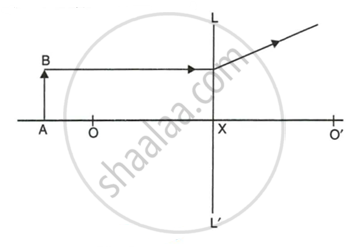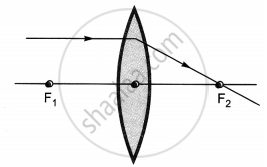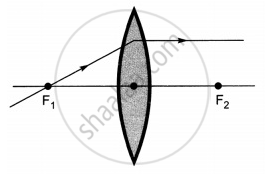Advertisements
Advertisements
प्रश्न
Which of the following can form a virtual image which is always smaller than the object?
(a) a plane mirror
(b) a convex lens
(c) a concave lens
(d) a concave mirror
उत्तर
a concave lens
A concave lens always forms a virtual image, smaller than the size of the object.
संबंधित प्रश्न
If the image formed by a lens for all positions of an object placed in front of it is always erect and diminished, what is the nature of this lens? Draw a ray diagram to justify your answer.
If the numerical value of the power of this lens is 10 D, what is its focal length in the Cartesian system ?
Where must the object be placed for the image formed by a converging lens to be:
virtual, upright and larger than the object?
Draw a diagram to show how a converging lens focusses parallel rays of light?
An object is placed 10 cm from a lens of focal length 5 cm. Draw the ray diagrams to show the formation of image if the lens is diverging.
What is the difference between the two images formed above?
A beam of light is incident through the holes on one side of a box and emerges out through the holes on its opposite side as shown in the following figure:
The box contains:
(a) a glass prism
(b) a concave lens
(c) a convex lens
(d) a parallel-sided glass slab
Study the diagram below.

- Name the lens LL’.
- What are the points O and O' called ?
- Complete the diagram to form the image of the object AB.
- State three characteristics of the image.
The diagrams showing the correct path of the ray after passing through the lens are:
 |
 |
| I | II |
 |
 |
| III | IV |
A student obtained clear image of window grills on the screen. But the teacher told him to get the image of a tree far away, instead of window. To get a clear image, the lens must be ............................
